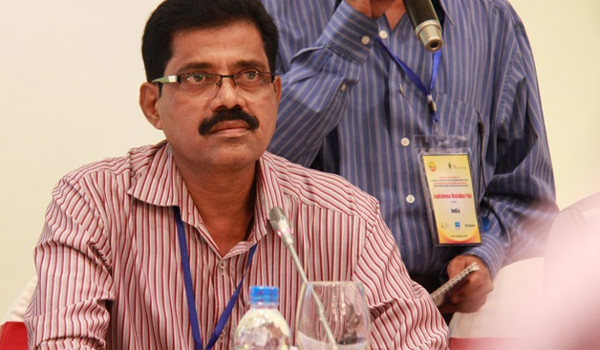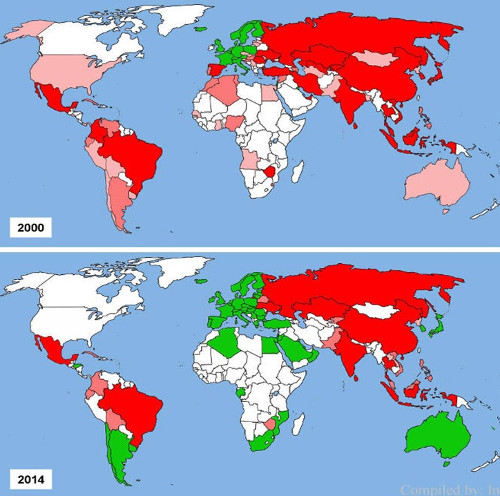Asbestos pain of Asia
As a region that consumes more than 60% of global asbestos, Asia will have to embrace a "tsunami" of asbestos-caused diseases in the next few decades, according to experts.
What Mr. Rajendra Pevekar remembers every time he runs to the door to hug his father when he comes home from work is the smell of burning plastic and sparkling spots of dust on his father's shirt. At that time, the Indian man was completely unaware that the tiny dust was asbestos - the poison was killing over 100,000 people in the world every year.
It was not until 2010 that Mr. Rajendra learned of the link between asbestos fiber from an automobile component factory where his father worked as a cleaning agent with lung cancer killed his father. Now, when his father Rajendra died long ago, he and his mother are still suffering from the disease.

Mr. Rajendra Pevekar.(Photo: Le Van).
' It is a very slow poison. It devastates your lungs without your knowledge of its existence , 'said Rajendra at the International Conference on Occupational Disease Control and Improving Occupational Safety and Health, which took place in Hanoi. last September 6.
Also a victim of asbestos, Mr. Ji Yol Jung, a member of a family living near the Kwang Cheon asbestos mine in Hong Seong City, South Korea, said that up to 26 of the 71 members of his family suffered from Asbestos Related Diseases (ARD). Of these, 10 died. The survivors are still suffering daily from the torment of the disease.
'It is a tragedy that many families live near the suffering Kwang Cheon asbestos mine,' said Ji Yol Jung. Although Korea issued a ban on asbestos eight years ago, the consequences of asbestos poisoning are still very heavy.
Not only India and South Korea, many Asian countries are and will continue to suffer many "pain" named asbestos in the coming decades, according to experts.

Map of countries using and prohibiting asbestos comparison between 2000 and 2014. Green is a country that prohibits asbestos.Red is the country that uses> 10 thousand tons.White is the country of use
Asia is currently the world's largest asbestos user region, accounting for more than half of the global consumption of asbestos. If the period from 1920-1970, the amount of asbestos consumed in Asia was only about 14%, then in the period 2001-2007, the amount of asbestos used here was up to 64%. Statistics show that in 2011, Asia and the Middle East accounted for 85% of the world's asbestos consumption.
However, the number of ARD deaths caused in Asia is quite low, only about 12 882 cases, accounting for about 13% of the world. The main reason is attributed to the fact that Asian countries have started using asbestos since the 70s and 80s of the 20th century, while the incubation period of ARD is usually 20-30 years, even is 50 years.
- There will be 6,600 cases of cancer if using asbestos by 2030
According to experts, in the next few decades, when the incubation period is sufficient, the number of asbestos-caused deaths will skyrocket . GS. Ken Takahashi, Director of the Center for Cooperation in Occupational Diseases of the World Health Organization (WHO), University of Health and Environment (UOEH) calls this "tsunami" of asbestos diseases. Asia will have to suffer.
'The outbreak of asbestos diseases in the coming decades in Asia is predictable. Therefore, Asian countries should not only stop the use of asbestos, but also have to prepare for a great deal of asbestos-related diseases, GS. Takahashi writes in Respirology magazine, an Asia Pacific Journal of Respiratory.
Persistent consequences
While the region with the most asbestos consumption, Asian countries are struggling in a persistent battle to reach a complete ban on this toxic material.
Until now, with a population of more than 4 billion people, accounting for more than 60% of the world's population, but in Asia only 4 countries have issued a ban on asbestos. In addition to Japan (2004) and Korea (2007), the two countries and territories issued the latest asbestos ban, Hong Kong (2014) and Nepal (2015).

Like Vietnam, asbestos in Nepal is mainly used in roofing sheets.
As a country between India and China, two of the world's largest asbestos consumers, with a relatively young constitutional and legal system, Nepal has reached a complete ban on toxic asbestos. harm. However, experts with a large amount of asbestos products are being used in the country over the past time, the consequences of future asbestos may still need a long time to be able to handling.
Experience in European countries shows that handling the consequences of asbestos is very persistent and extremely difficult, even when the country has issued a complete ban. For example, in France, chrysotile was banned since 1997, but according to the senior council of public health, there are still 2,200 more cases of cancer annually attributed to chrysotile. It is estimated that from now until 2050, 68-100 thousand people will die from chrysotile.
Similarly, Australia has banned chrysotile since 2003, however, up to now, the number of mesothelioma cases is still increasing. According to the study, 80% of mesothelioma cases are caused by asbestos exposure after a period of 20-30 years.
'We are witnessing the third wave of asbestos-related diseases . The first batch of miners suffering from mesothelioma and lung cancer. The second batch of people working directly with asbestos at factories, unloading workers from the pier, or masons, plumbers, electricians and carpenters , 'said Sharan K. C, of the Human Organization. Australia's overseas health, education and development people (APHEDA) said at a meeting on September 6.
'Now we are seeing a third wave or an illness of people with indirect diseases. These are the women who wash their husband's asbestos dusty clothes, as well as the children who inhale asbestos from their father's work clothes, ' said Sharan.
Sharing this view, Phillip Hazelton from the Office of the International Labor Organization (ILO) said that there is still a 'huge amount of work to control the dangers that will continue due to exposure. Contamination with asbestos remains in many buildings even after a ban on asbestos use has been obtained. '
'The consequences of asbestos for the community will be very long even after the ban is issued. We must continue to make greater efforts to raise community awareness in preventing future asbestos-related diseases. Without a ban on asbestos, workers and their families will continue to die , 'said Sharan.
Obviously, if you continue to use asbestos, tons of asbestos tragedies of Asian countries, including Vietnam may not show up right now but it will certainly happen in the future. but the future is very close.
- There will be 6,600 cases of cancer if using asbestos by 2030
- WHO sends a letter to the Prime Minister proposing to ban asbestos
- Minimize the risk of asbestos-related diseases
- Asbestos is extremely toxic to health
- Production of non asbestos roofing sheets by internal technology
- Know danger without precaution
- 'Ghost town' in Australia, where breathing can also be deadly
- 9 types of rocks - beautiful but deadly minerals present on Earth
- Why is it weak or hurt?
- Unusual pain helps you diagnose yourself
- Why does rain make pain worse?
- Simple way to prevent neck pain and back pain
 Green tea cleans teeth better than mouthwash?
Green tea cleans teeth better than mouthwash? Death kiss: This is why you should not let anyone kiss your baby's lips
Death kiss: This is why you should not let anyone kiss your baby's lips What is salmonellosis?
What is salmonellosis? Caution should be exercised when using aloe vera through eating and drinking
Caution should be exercised when using aloe vera through eating and drinking